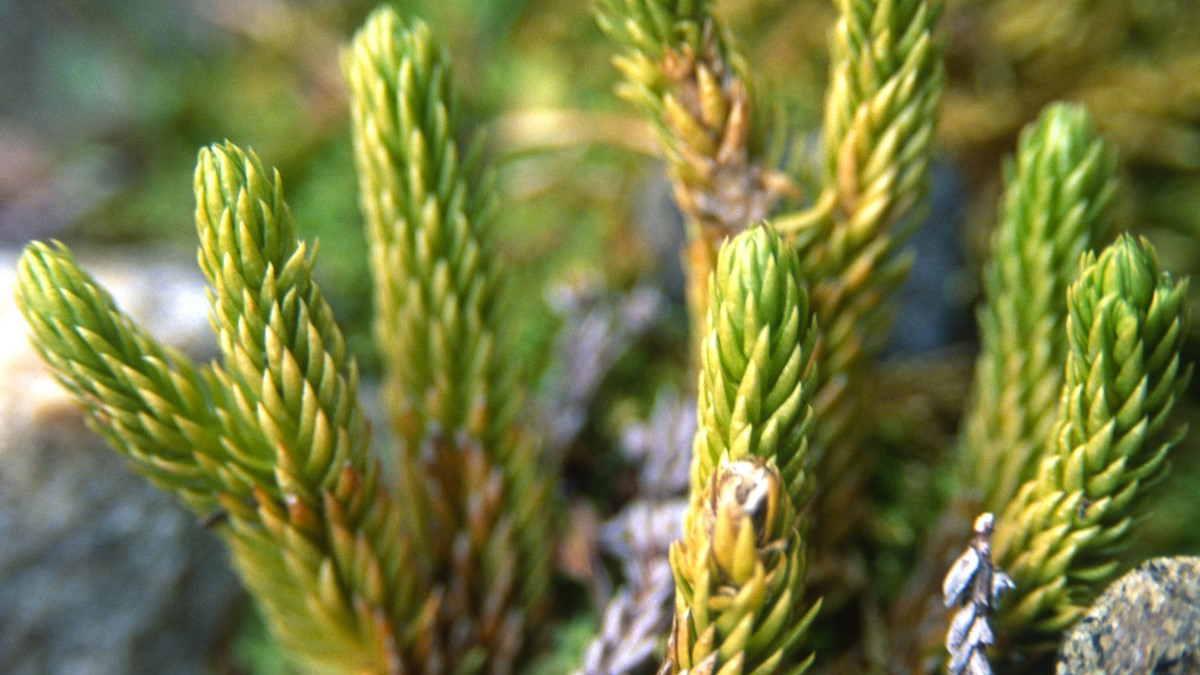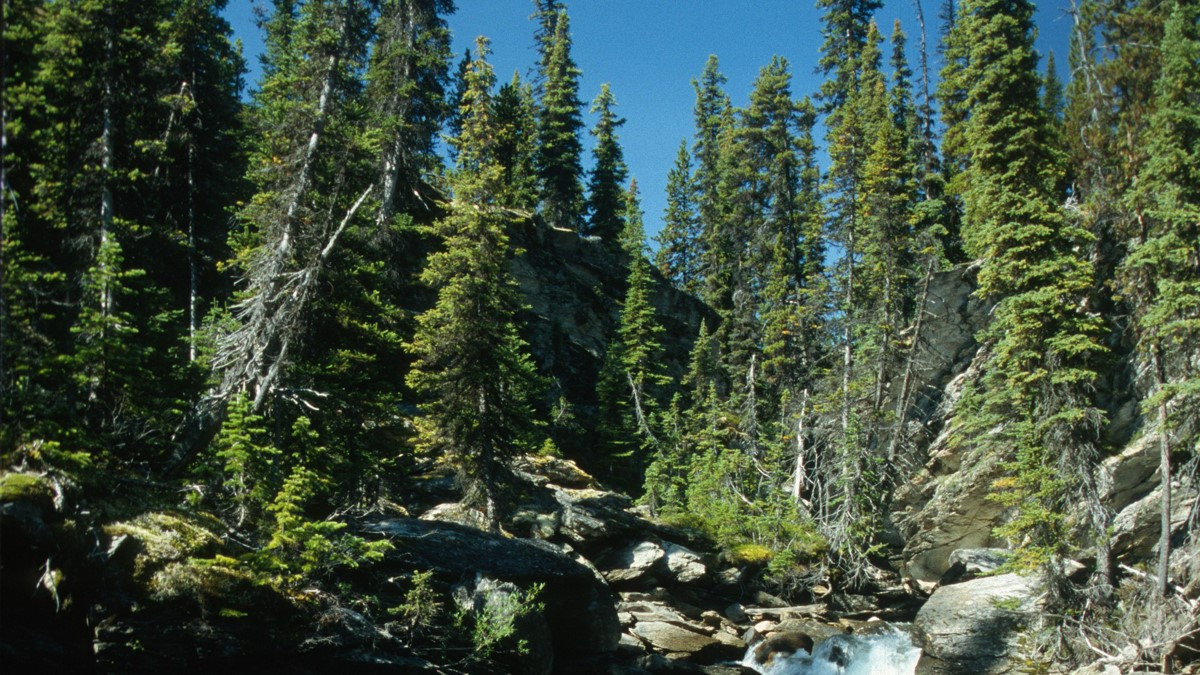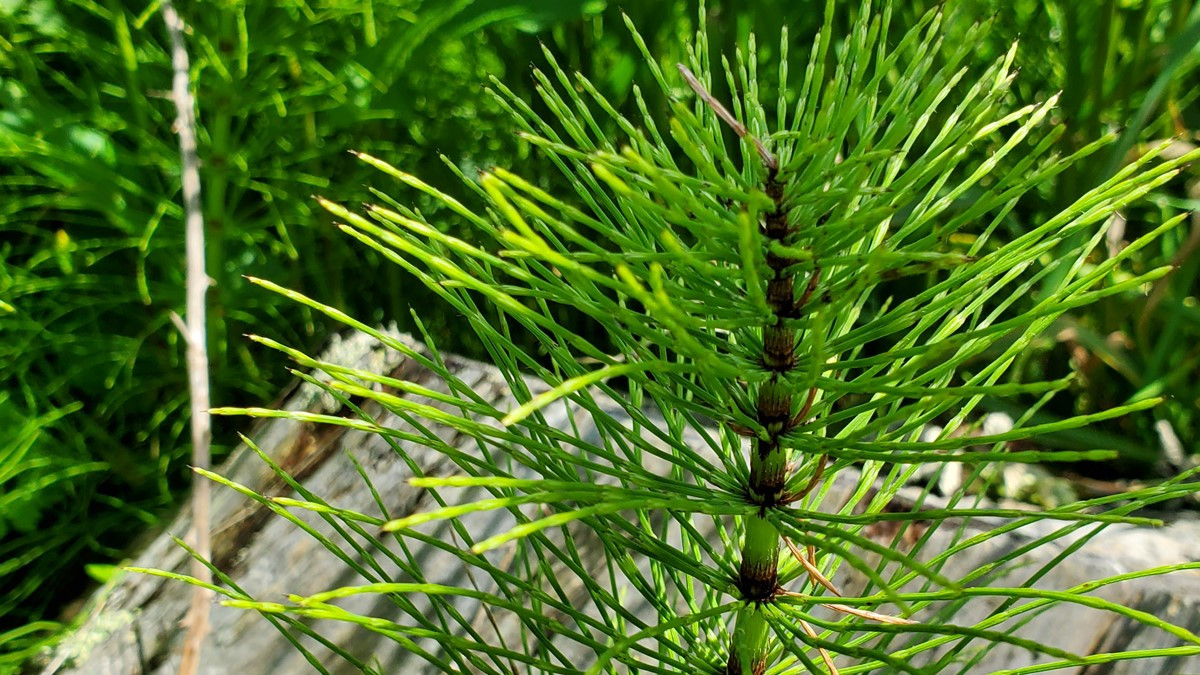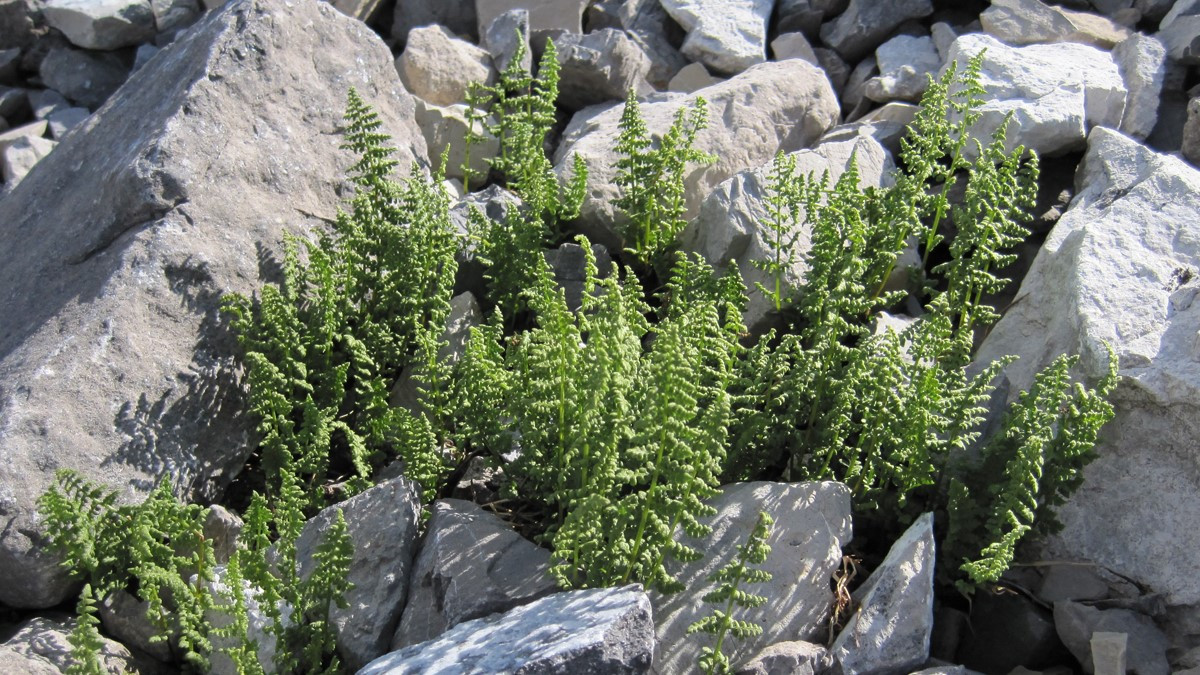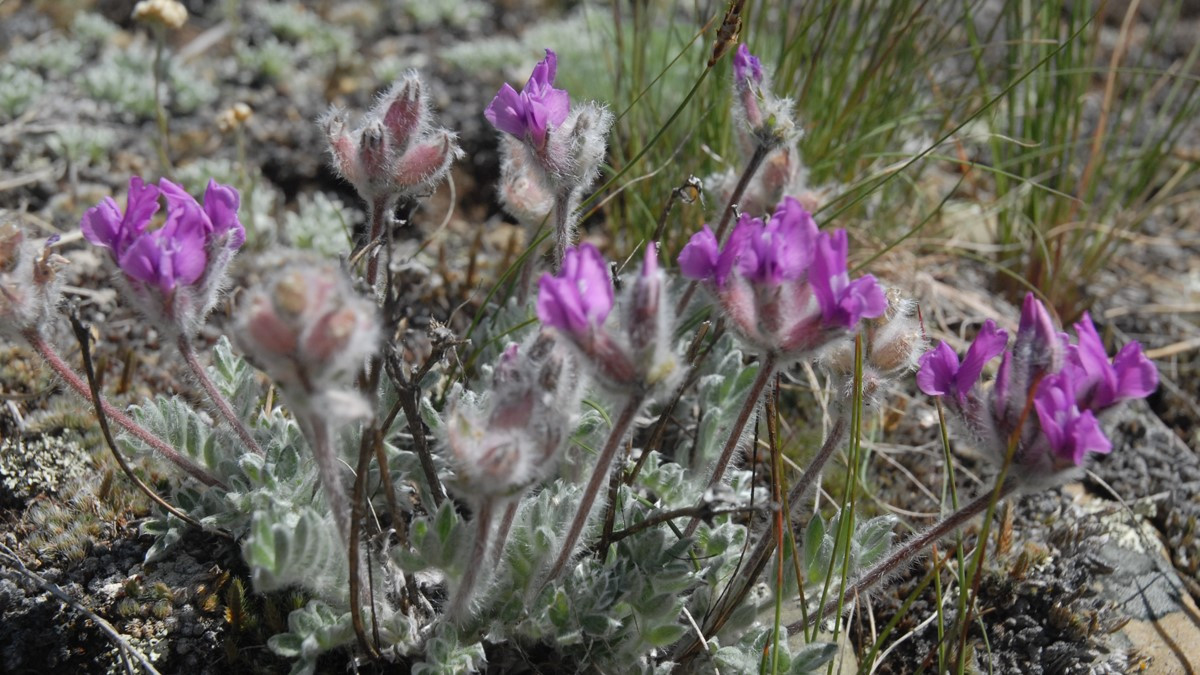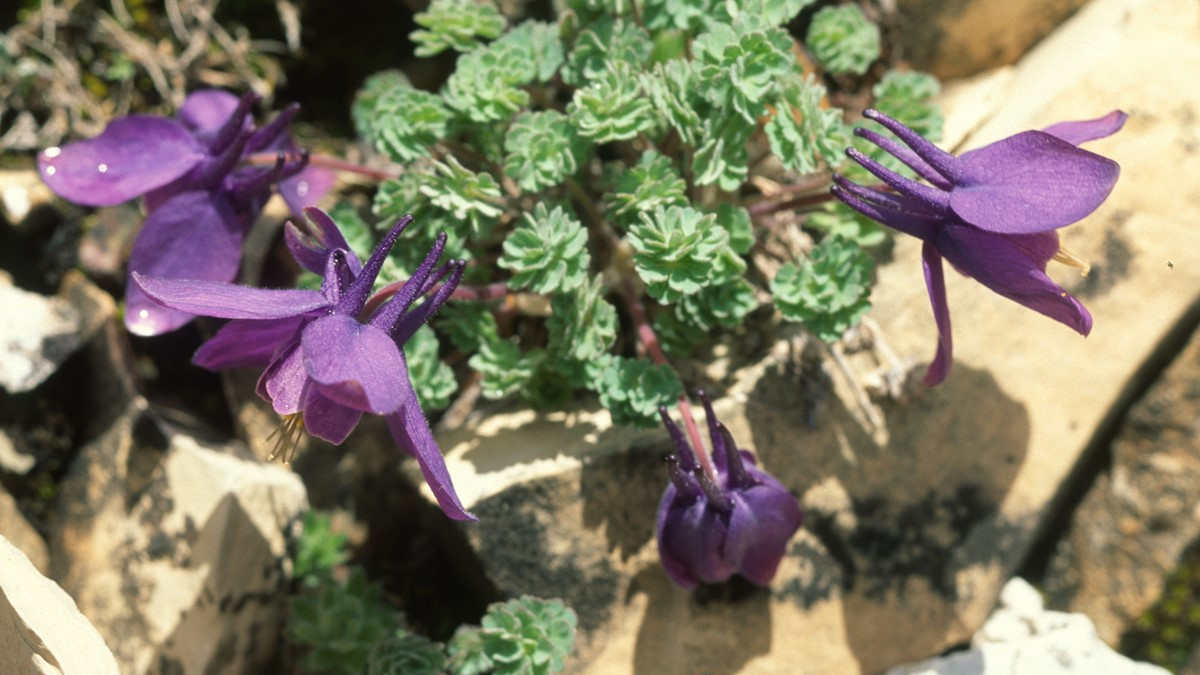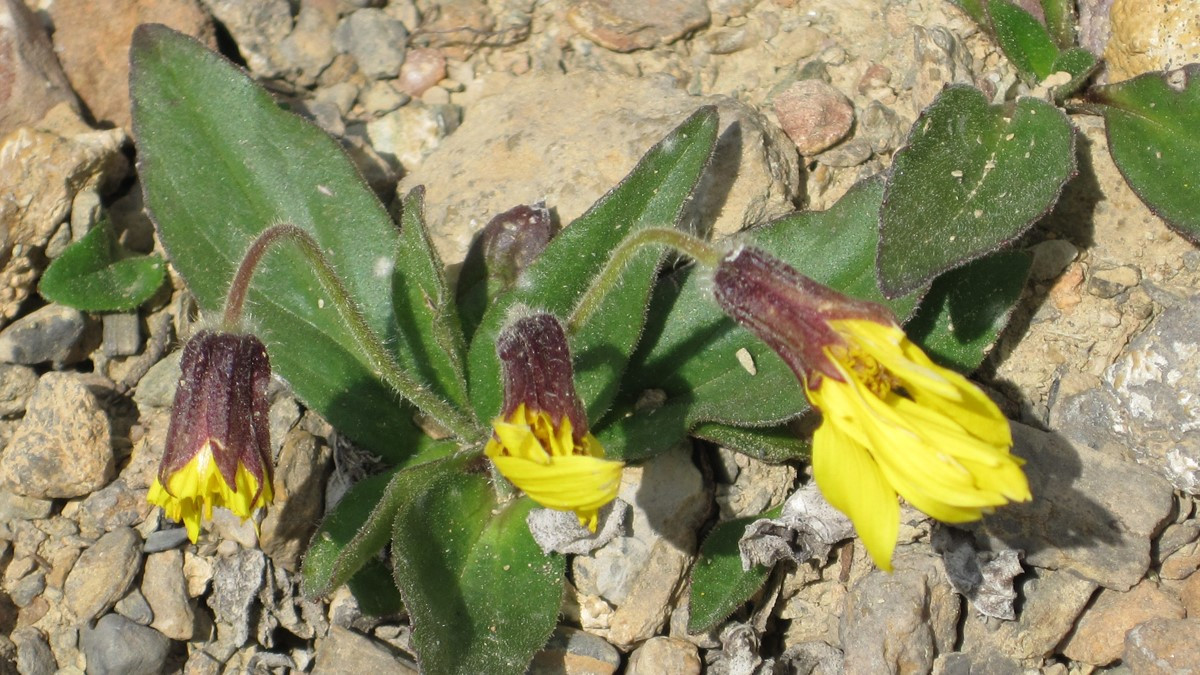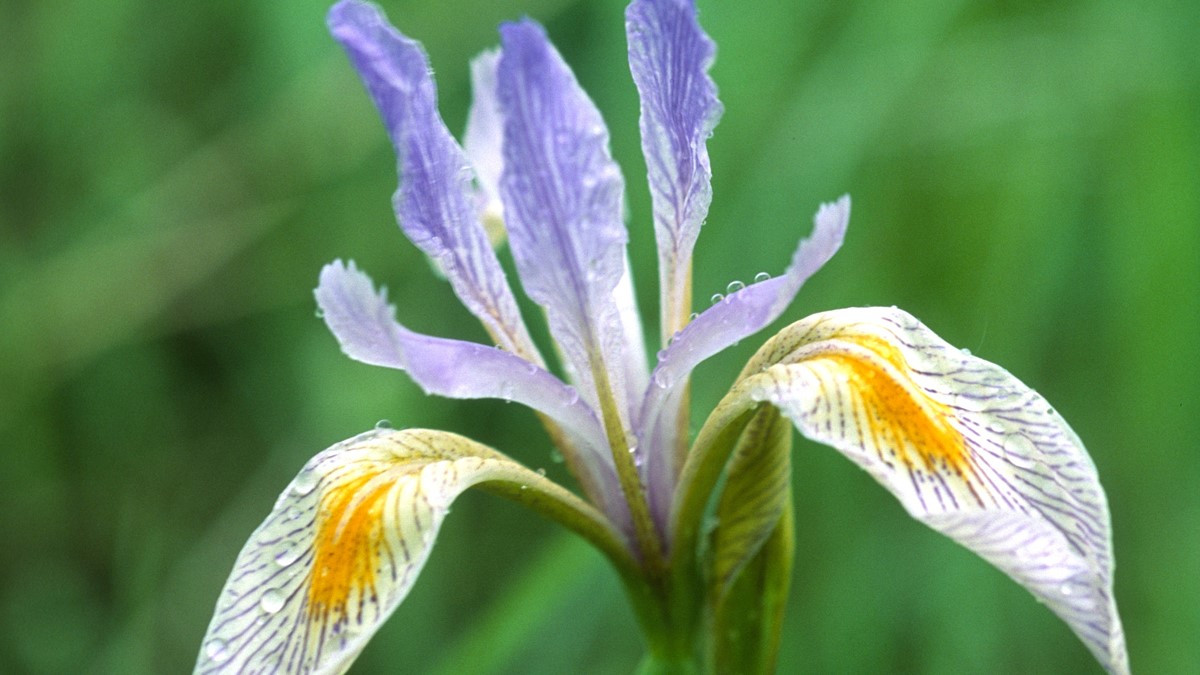Non-urgent government operations are closed December 24 to January 1, reopening January 2. View available services during this period.
About the indicator
Plants are an important component of Alberta’s biological diversity (biodiversity) and provide information about the state of our natural ecosystems.
Plants provide oxygen, food, medicine, clothing and wildlife habitat, among other values. Plants also help regulate the climate by sequestering carbon and can improve air, water and soil quality by acting as a filter.
This indicator summarizes the general status of vascular plants in Alberta in 2015 and 2020, as reported by the Canadian Endangered Species Conservation Council (2016, 2022). This indicator also reports on the status of non-native or exotic vascular plant species in the province.
Vascular plants facts
- Vascular plants make up the majority of all terrestrial plants and include any plant with specialized vascular tissue (xylem and phloem) to transport water and nutrients. These include ferns, clubmosses, horsetails, conifers and flowering plants, all of which are represented in the Alberta flora.
- The estimated global flora of vascular plants is over 350,000 species (Antonelli et al. 2023) with 5,300 in Canada (Canadian Endangered Species Conservation Council 2020) and approximately 2,000 reported for Alberta (Alberta Conservation Information Management System 2022).
- Many vascular plant species have a wide geographic distribution throughout North America but occur at the edge of their range in Alberta.
- Major threats to vascular plants nationally include habitat loss and alteration, disturbance, invasive species and climate change (McCune et al. 2013, McCune and Morrison 2020, Rosenthal et al. 2020).
- Given incomplete information on population trends, abundance and distribution for Alberta's plant species, this indicator uses the widely reported metric of species conservation status to reflect the overall status of vascular plants in Alberta.
Data collection and analysis
Table 1. Ranks and conservation status of vascular plant species and ecological communities used by NatureServe and General Status. These ranks are applied at both a Subnational (S rank), National (N rank) and Global (G rank) scale.
| Rank (S/N/G) | Conservation status category |
|---|---|
| 1 | Critically imperiled At very high risk of extirpation in the jurisdiction due to very restricted range, very few populations or occurrences, very steep declines, severe threats, or other factors. |
| 2 | Imperiled At high risk of extirpation in the jurisdiction due to restricted range, few populations or occurrences, steep declines, severe threats, or other factors. |
| 3 | Vulnerable At moderate risk of extirpation in the jurisdiction due to a fairly restricted range, relatively few populations or occurrences, recent and widespread declines, threats, or other factors. |
| 4 | Apparently secure At a fairly low risk of extirpation in the jurisdiction due to an extensive range and/or many populations or occurrences, but with possible cause for some concern as a result of local recent declines, threats, or other factors. |
| 5 | Secure At very low or no risk of extirpation in the jurisdiction due to a very extensive range, abundant populations or occurrences, with little to no concern from declines or threats. |
| H | Possibly extirpated Known from only historical records but still some hope of rediscovery. There is evidence that the species or ecosystem may no longer be present in the jurisdiction, but not enough to state this with certainty. |
| X | Presumed extirpated Species is believed to be extirpated from the jurisdiction. Not located despite intensive searches of historical sites and other appropriate habitat, and virtually no likelihood that it will be rediscovered. |
| N/A | Not applicable The rank is not applicable because the species is not a suitable target for conservation activities (example: exotic and accidental species). |
| NR | Not ranked Conservation status not yet assessed. |
| U | Unknown Currently unrankable due to lack of information or due to substantially conflicting information about status or trends. |
Summary of key results
Last updated: September 2024
- In 2020, 1,615 native vascular plant species were included in the General Status report for Alberta (Figures 1 and 2). See Wild Species: The General Status of Species in Canada for the full report.
- 704 vascular plants (44%) were ranked S5 or S4(secure or apparently secure).
- 499 plant species (31%) were ranked S3 (vulnerable).
- 176 species (11%) were ranked S2 and 168 species (10%) were ranked S1, meaning that they may be at risk. General status ranks S1 and S2 include plants that are naturally rare and not currently at risk to habitat loss or alteration but may be under threat from climate change and stochastic (unpredictable) events.
- 10 vascular plant species (<1%) have not been seen recently and have been ranked SH (possibly extirpated) in Alberta.
- Two vascular plant species (<1%) have not been adequately assessed (SNR) and the status of 56 species (3%) is unknown (SU), often due to issues with taxonomy.
- Three species were discovered or newly reported between 2015 and 2020 and these are: Yoho paintbrush (Castilleja purpurascens) (S1), Fraser's St. John's-wort (Hypericum fraseri) (SU) and compact flax (Linum compactum) (SU). The rank of SU was applied to Fraser’s St. John’s-wort and compact flax pending more information.
- Three newly described species are found in Alberta including Michigan moonwort (Botrychium michiganense), North American moonwort (Botrychium neolunaria) and Hudson's cinquefoil (Potentilla hudsonii). These are not new discoveries but rather the result of changes in taxonomy and revisions to the concepts of closely related species.
- Ribbon-leaved pondweed (Potamogeton epihydrus) was reported by the Alberta Biodiversity Monitoring Institute and is reported in General Status 2020. However, the status of this species is unknown and thus remains as a potential addition pending more information.
- Several plant species included in the General Status for Alberta are naturally rare or uncommon plants while some are rare due to human activities. Several plants, some of which are rare or uncommon, have their entire Canadian population within Alberta. For more information, see the fact sheet:
Figure 1. Alberta’s native vascular plant species and their NatureServe status ranks in 2015 and 2020
Chart data table
| Year | S1 | S2 | S3 | S4 | S5 | SH | SNR | SU |
|---|---|---|---|---|---|---|---|---|
| 2015 | 165 | 178 | 505 | 287 | 421 | 11 | 36 | |
| 2020 | 168 | 176 | 499 | 286 | 418 | 10 | 2 | 56 |
Source: Government of Alberta
Accessible chart description
Stacked bar graph showing the number of native vascular plant species in Alberta grouped by NatureServe status ranks in 2015 and 2020. In 2020, 704 vascular plants (44%) were ranked S5 or S4 (secure or apparently secure), 499 plant species (31%) were ranked S3 (vulnerable), 176 species (11%) were ranked S2 and 168 species (10%) were ranked S1, meaning that they may be at risk. Ten vascular plant species (<1%) have not been seen recently and have been ranked SH (possibly extirpated) in Alberta. Two vascular plant species (<1%) have not been adequately assessed (SNR) and the status of 56 species (3%) is unknown (SU), often due to issues with taxonomy.
Figure 2. Proportion of NatureServe status ranks for Alberta’s native vascular plant species in 2020
Chart data table
| General status rank | Native vascular plant species |
|---|---|
| S1, 10% | 168 |
| S2, 11% | 176 |
| S3, 31% | 499 |
| S4, 18% | 286 |
| S5, 26% | 418 |
| SH, 1% | 10 |
| SNR, 0% | 2 |
| SU, 3% | 56 |
Source: Government of Alberta
Accessible chart description
Pie chart showing the proportion of general status ranks for Alberta’s native vascular plant species in 2020. Total number of plant species and their respective percentage is provided for each NatureServe status rank. In 2020, 704 vascular plants (44%) were ranked S5 or S4 (secure or apparently secure), 499 plant species (31%) were ranked S3 (vulnerable), 176 species (11%) were ranked S2 and 168 species (10%) were ranked S1, meaning that they may be at risk. Ten vascular plant species (<1%) have not been seen recently and have been ranked SH (possibly extirpated) in Alberta. Two vascular plant species (<1%) have not been adequately assessed (SNR) and the status of 56 species (3%) is unknown (SU), often due to issues with taxonomy.
Vascular plant species by plant habit
- Plants are often described by their general appearance, or plant habit, including their size and growth form. We used a modified version of the plant habits provided by VASCAN to categorize plants into 6 habits: trees, shrubs, vines, forbs, grasses and grass-like, and ferns and allies.
- Of the 1,615 native vascular plants included in the General Status 2020 for Alberta, 37 (2%) are trees, 136 (8%) are shrubs, 3 (<1%) plants are vines, 1,007 (62%) species are forbs, 354 (22%) are grasses and grass-like species and 78 (5%) are ferns and allies (Figure 3).
- 53 (3%) species are aquatic vascular plants, all of which are forbs, that grow in or near water. One third of these aquatic plants are ranked S1 and S2 (not shown).
Figure 3. Plant habit of Alberta’s native vascular plant species in 2020
Chart data table
| Tree | Shrub | Vine | Forb | Grasses and grass-like | Ferns and allies | |
|---|---|---|---|---|---|---|
| Number of species | 37 | 136 | 3 | 1007 | 354 | 78 |
Accessible chart description
Stacked bar graph showing the plant habit of Alberta’s native vascular plant species in 2020. Of the 1,615 native vascular plants, 37 (2%) are trees, 136 (8%) are shrubs, 3 (<1%) plants are vines, 1,007 (62%) species are forbs, 354 (22%) are grasses and grass-like species and 78 (5%) are ferns and allies.
Detailed status designations
As of April 2024, 9 vascular plant species have completed detailed status assessments of which 7 have been assigned legal designations under Alberta’s Wildlife Act:
- Six vascular plants species have been designated Endangered:
- Limber pine (Pinus flexilis)
- Slender mouse-ear-cress (Cruchihimalaya virgata)
- Soapweed (Yucca glauca)
- Tiny cryptantha (Cryptantha minima)
- Western spiderwort (Tradescantia occidentalis)
- Whitebark pine (Pinus albicaulis)
- One species, small-flowered sand-verbena (Trypterocalyx micranthus), is designated Threatened, meaning that it will likely become endangered if limiting factors such as dune stabilization, habitat loss and competition from invasive species are not reversed (Alberta small-flowered sand-verbena Recovery Team, 2012; Alberta Sustainable Resource Development 2003).
- Two species are designated Special Concern as they are particularly sensitive to human activities or natural events:
- Hare’s-foot locoweed (also called hare-footed locoweed) (Oxytropis lagopus)
- Western blue iris (also called western blue flag) (Iris missouriensis)
- An additional 4 species found in Alberta are listed under Schedule 1 of the federal Species at Risk Act:
- Bolander’s quillwort (Isoetes bolanderi)
- Smooth goosefoot (Chenopodium subglabrum)
- Dwarf woollyheads (Psilocarphus brevissimus) (prairie population)
- Floccose tansy (Tanacetum huronense floccosum)
Non-native species
- Non-native plants, often referred to as exotic or alien, are species that have been introduced to Alberta accidentally or deliberately.
- A species may be native to one area but exotic in another. Ponderosa pine (Pinus ponderosa) for example, is a common naturally occurring tree in the interior of British Columbia but introduced in Alberta and thus considered to be exotic here.
- Alberta regulates plant species that present significant economic, social or ecological risks under the Weed Control Act and the accompanying Weed Control Regulation. The regulation includes a schedule of 46 plants that are prohibited noxious weeds (Schedule 1) and 29 plants that are declared noxious weeds (Schedule 2). Not all species included on these schedules are currently known from the province but have a high likelihood of occurring in the future.
- Due to their rapid spread and high competitiveness, noxious weeds must be controlled, and prohibited noxious weeds must be destroyed (the latter are either not currently found in Alberta or are limited to few locations making eradication possible).
- Sixteen aquatic invasive plant species are identified as prohibited throughout Alberta under Item 2 of the Schedule in the Fisheries (Alberta) Act. These species are illegal to be imported, sold, transported or possessed in Alberta. For more information, see the Don’t let it loose resources.
- Among Alberta’s 1,965 vascular plant species ranked as part of the 2020 General Status process (Endangered Species Conservation Council 2022), 1,615 species (82%) were native and 350 species (18%) were exotic (Figure 4). Twelve new exotic species were reported for Alberta between 2015 and 2020.
- Of the 350 exotic plant species identified as occurring in Alberta, 49 species (14%) are considered invasive and are provincially regulated under Alberta’s Weed Control Act, including 29 noxious weeds and 20 prohibited noxious weeds (Figure 4).
- Invasive plant species, both in terrestrial and aquatic ecosystems, spread quickly and compete with native species for resources, alter ecosystems and have no natural means of control. For more information on invasive plant species, visit Alberta’s invasive aquatic plants and Alberta’s Invasive Species Council.
Figure 4. Alberta’s native and non-native vascular plants in 2020
Chart data table
| Category | Native vascular plant species |
|---|---|
| Native, 82% | 1615 |
| Noxious, 2% | 29 |
| Prohibited Noxious, 1% | 20 |
| Non-regulated, 15% | 301 |
Source: Government of Alberta
Accessible chart description
Pie chart showing the proportion of native and non-native vascular plant species in Alberta in 2020. Non-native plants include species designated as Noxious and Prohibited Noxious under Alberta’s Weed Control Act as well as non-regulated exotics. Total number of plant species and their respective percentage is provided for each category. Among Alberta’s 1,965 vascular plant species ranked as part of the 2020 General Status process, 1,615 species (82%) were native and 350 species (18%) were exotic. Of the 350 exotic plant species identified as occurring in Alberta, 49 species (14%) are considered invasive, including 29 noxious weeds and 20 prohibited noxious weeds.
References
- Alberta Conservation Information Management System (ACIMS) 2022.
- Alberta Small-flowered Sand-verbena Recovery Team. 2012. Alberta Small-flowered Sand-verbena Recovery Plan 2012-2017. Alberta Environment and Sustainable Resource Development, Alberta Species at Risk Recovery Plan No. 24. Edmonton, AB. 27 pp.
- Alberta Sustainable Resource Development. 2003. Status of the Small-flowered Sand Verbena (Tripterocalyx micranthus) in Alberta. Alberta Sustainable Resource Development, Fish and Wildlife Division, and Alberta Conservation Association, Wildlife Status Report No. 48, Edmonton, AB. 24 pp.
- Antonelli, A. et al. 2023. State of the World’s Plants and Fungi 2023. Tackling the Nature Emergency: Evidence, gaps and priorities. Royal Botanic Gardens, Kew.
- Canadian Endangered Species Conservation Council. 2022. Wild Species 2020: The General Status of Species in Canada. National General Status Working Group: 172 pp.
- Faber-Langendoen, D., J. Nichols, L. Master, K. Snow, A. Tomaino, R. Bittman, G. Hammerson, B. Heidel, L. Ramsay, A. Teucher, and B. Young. 2012. NatureServe Conservation Status Assessments: Methodology for Assigning Ranks. NatureServe, Arlington, VA.
- Master, L. L., D. Faber-Langendoen, R. Bittman, G. A. Hammerson, B. Heidel, L. Ramsay, K. Snow, A. Teucher, and A. Tomaino. 2012. NatureServe Conservation Status Assessments: Factors for Evaluating Species and Ecosystem Risk. NatureServe, Arlington, VA.
- McCune, J. L., W. L. Harrower, S. Avery-Gomm, J. M. Brogan, A.-M. Csergő, L. N. K. Davidson, A. Garani, L. R. Halpin, L. P. J. Lipsen, C. Lee, J. C. Nelson, L. R. Prugh, C. M. Stinson, C. K. Whitney, and J. Whitton. 2013. Threats to Canadian species at risk: an analysis of finalized recovery strategies. Biological Conservation 166 (2013) 254–265.
- McCune, J. L. and P. D. S. Morrison. 2020. Conserving plant species at risk in Canada: land tenure, threats, and representation in federal programs. FACETS 5: 538–550. doi:10.1139/facets-2019-0014
- Rosenthal, J. R. Booth, N. Carolan, O. Clarke, J. Curnew, C. Hammond, J. Jenkins, E. McGee, B. Moody, J. Roman, K. Rossi, K. Schaefer, M. Stanley, E. Ward, and L. Weber. 2022. The impact of recreational activities on species at risk in Canada. Journal of Outdoor Recreation and Tourism 40 (2022) 100567
Resources
- Alberta Conservation Information Management System (ACIMS)
- ABMI Biodiversity Browser – Vascular Plants
- Alberta Invasive Species Council (AISC)
- Alberta Wildlife Act and Wildlife Regulation
- Alberta Weed Control Act
- Provincially regulated weeds
- Alberta Native Plant Council (ANPC)
- Biota of North America Program (BONAP) – North American Vascular Flora
- Database of Vascular Plants of Canada (VASCAN)
- Flora of North America
- General Status of Species in Canada reports
- NatureServe Explorer
- NatureServe National and Subnational Conservation Status Definitions
- PlantWatch Program

